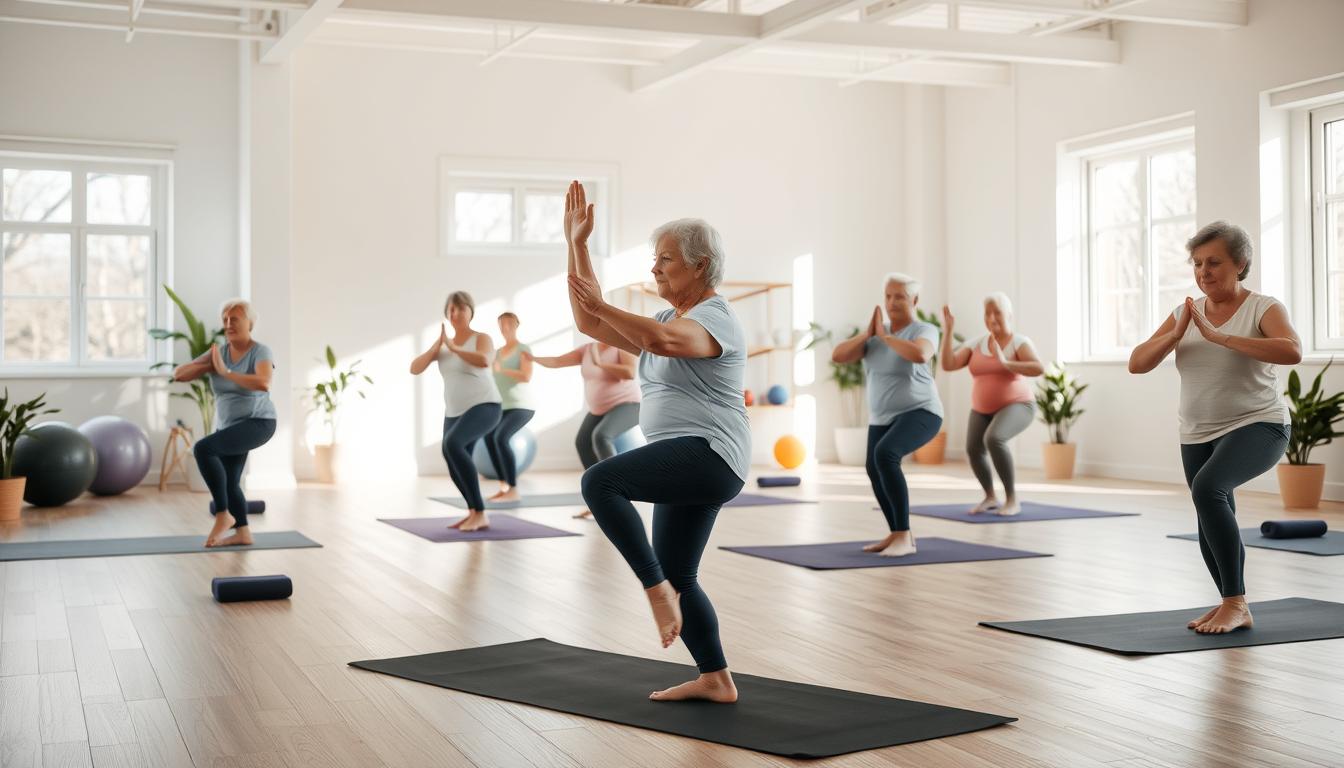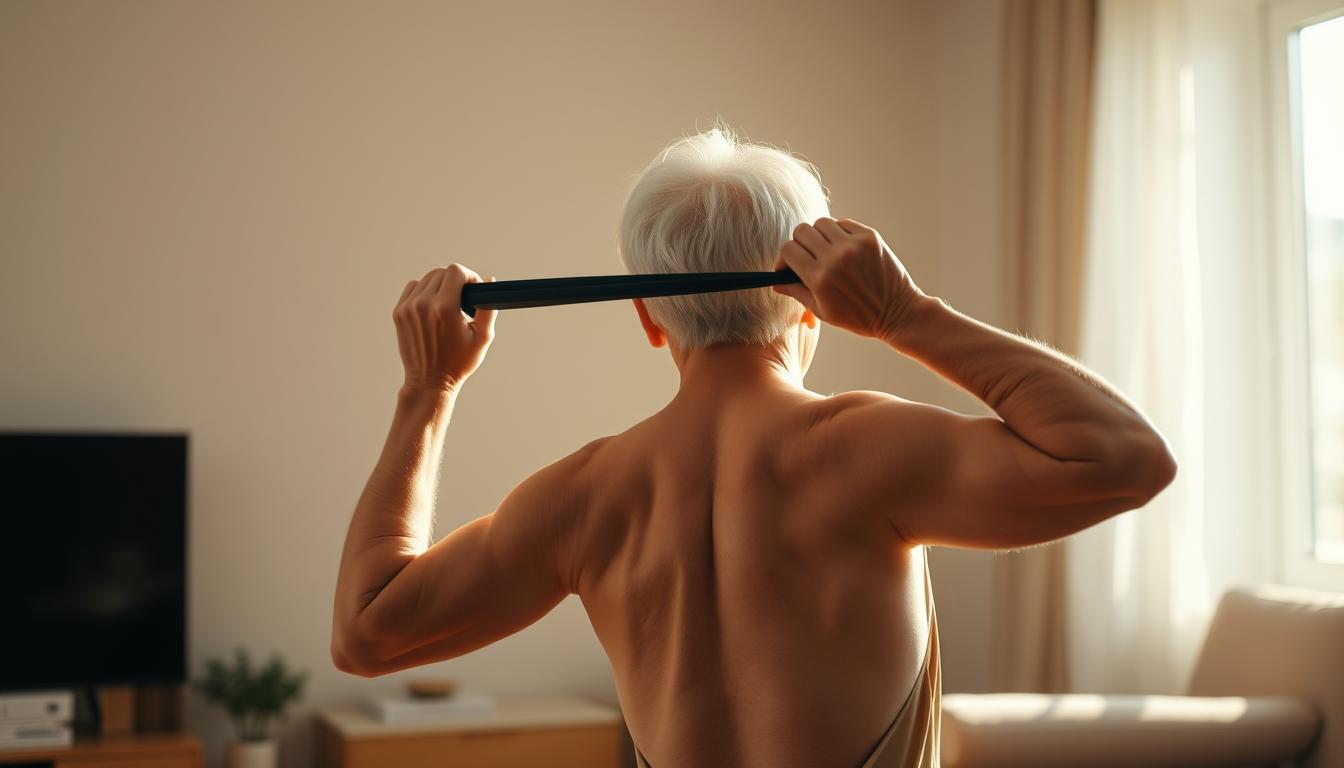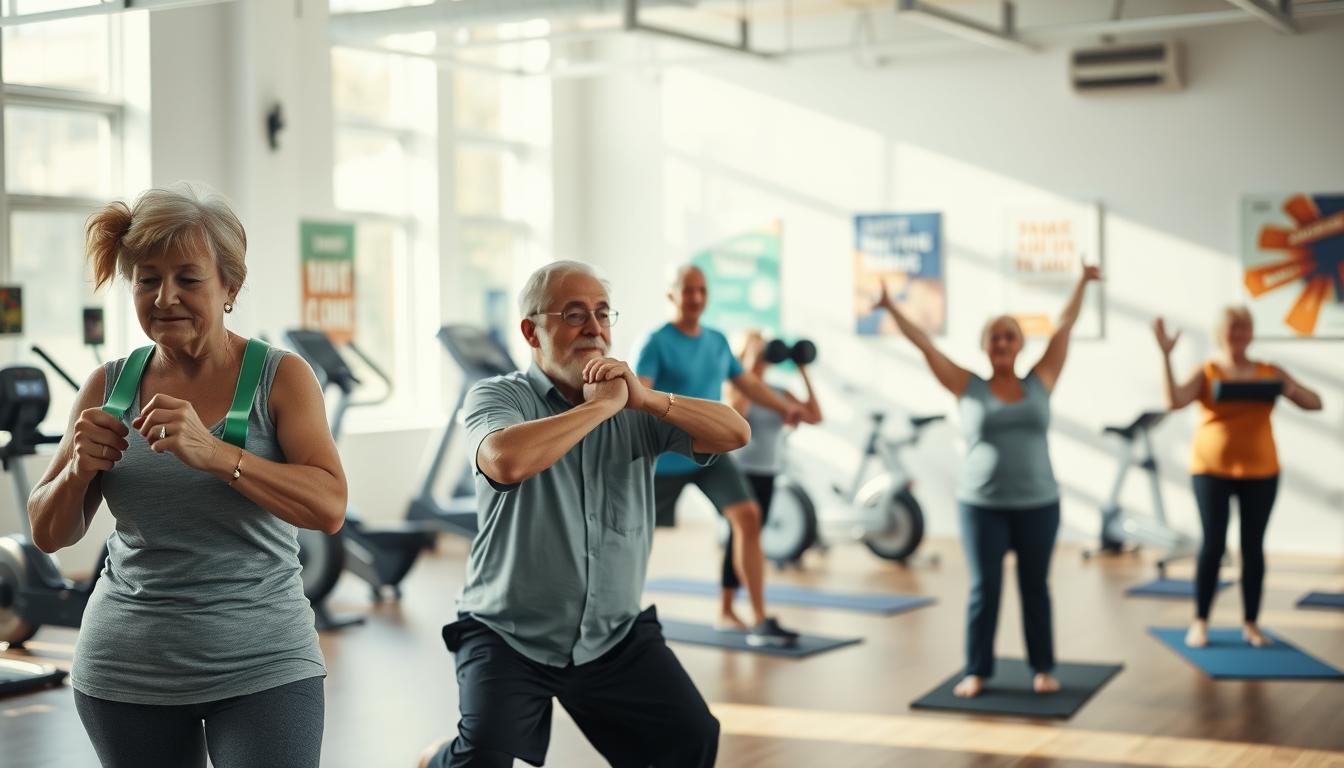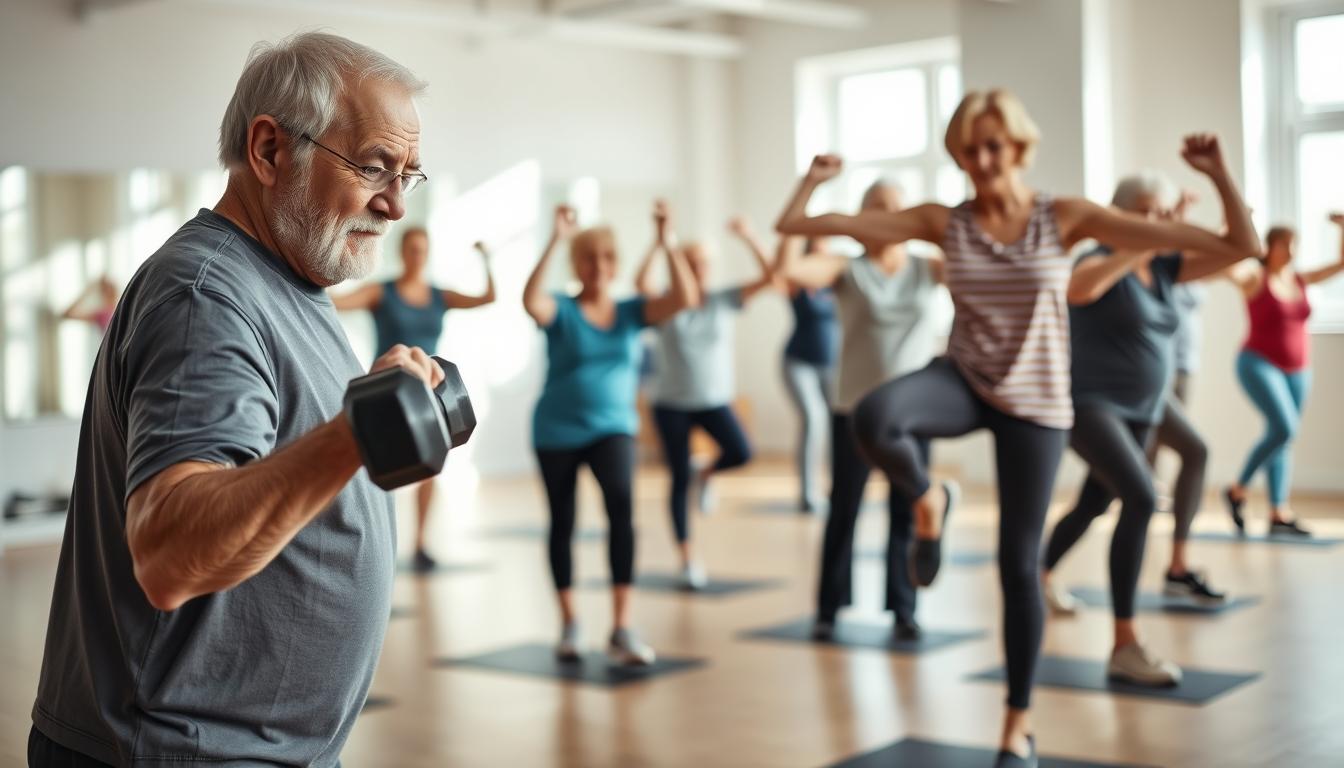Want to ditch that hip pain and walk like you own the sidewalk? Let’s cut to the chase: targeted movements can rebuild stability faster than you’d think. Research proves strong joints aren’t just about avoiding creaky knees—they’re your secret weapon for standing up from the couch or chasing grandkids without that “uh-oh” wobble.
Okay, so here’s the deal: weak hips are like a wobbly table leg. You know what I mean—one wrong step, and suddenly your knee’s throwing a tantrum. But guess what? A few minutes daily with moves like chair leg lifts (yes, while binge-watching Netflix) or floor bridges can turn those shaky foundations into solid oak.
I’ve seen folks go from “I can’t bend down” to doing garden squats like it’s nobody’s business. And balance? Let’s just say you’ll stop hugging walls in grocery store aisles. No magic pills here—just practical, no-nonsense routines that actually work.
Ready to swap “ouch” for “heck yeah”? Let’s roll.
Understanding the Mechanics Behind Hip Joint Stability and Health
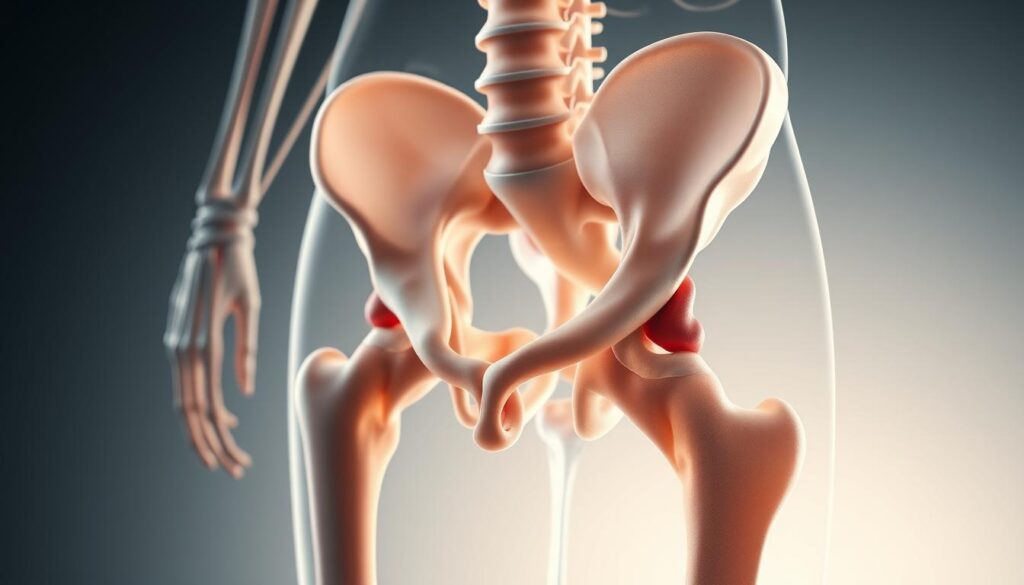
Ever wonder why bending to pet your dog feels like solving a Rubik’s Cube? Your hips work in three dimensions—forward, sideways, and rotational. Think of them as your body’s universal joint, connecting your torso to your legs. Strong glutes and hip flexors? That’s your golden ticket to pain-free movement.
Your Body’s Power Couple: Glutes & Flexors
Your backside isn’t just for sitting—it’s your stability command center. Weak glutes make your legs compensate, like using a soup spoon to dig a hole. And those hip flexors? Tight ones pull your pelvis forward, creating that “I’ve been gardening all day” hunch.
| Muscle Group | Role | Real-Life Impact |
|---|---|---|
| Glutes | Stabilizes pelvis | Prevents wobble when standing on one leg |
| Hip Flexors | Lifts knees | Helps climb stairs without grabbing the rail |
| Quadriceps | Supports joint | Makes rising from chairs feel effortless |
Daily Moves That Make or Break You
Believe it or not, sitting cross-legged for hours tightens those flexors faster than you can say “hip replacement.” Even walking with poor posture shifts weight to one side, wearing down joints unevenly. Here’s the kicker: proper alignment during simple tasks—like squatting to tie shoes—can prevent 80% of age-related back issues.
Want proof? Golfers who focus on hip mobility drive farther while staying active. It’s not about brute strength—it’s working smarter with what you’ve got. Next time you reach for that top shelf, notice if you’re leaning sideways. Your hips will thank you.
Identifying Hip Pain Triggers in Daily Life

Ever caught yourself leaning like the Tower of Pisa while washing dishes? That’s your body screaming for better alignment. Weak stabilizers and sloppy posture aren’t just annoying—they’re stealthy saboteurs turning routine movements into joint-wrecking marathons.
When Your Muscles Ghost Their Job
No kidding—your stabilizers are like invisible bodyguards. When they bail, your knees and lower back pick up the slack. Picture this: bending to grab a coffee mug becomes a tug-of-war between your hip muscles and gravity. If your alignment’s off, even stepping off a curb feels like negotiating a minefield.
| Daily Trigger | Body Impact | Resulting Pain |
|---|---|---|
| Slumped Standing | Shifts weight unevenly | Lower back stiffness |
| Twisting While Lifting | Overworks one side | Sharp hip or knee twinges |
| Cross-Legged Sitting | Shortens flexors | Stiffness when standing |
Believe it or not, that recliner you love? It’s turning your pelvis into a pretzel. Every hour spent in a twisted position grinds cartilage faster than a teenager’s skateboard wheels. And here’s the kicker: weak muscles force your joints to work overtime, like trying to open a jar with wet noodles instead of actual hands.
Notice how your knees cave inward when you climb stairs? That’s your stabilizers waving a white flag. Ground-level tasks—like tying shoes or gardening—become high-risk missions when your body’s alignment resembles a zigzag. The fix? Start noticing those micro-movements. Are you shifting weight to one hip while brushing your teeth? Leaning sideways to reach the top shelf? Your joints keep score.
Essential Tips for Mastering Hip Strengthening Exercises for Seniors
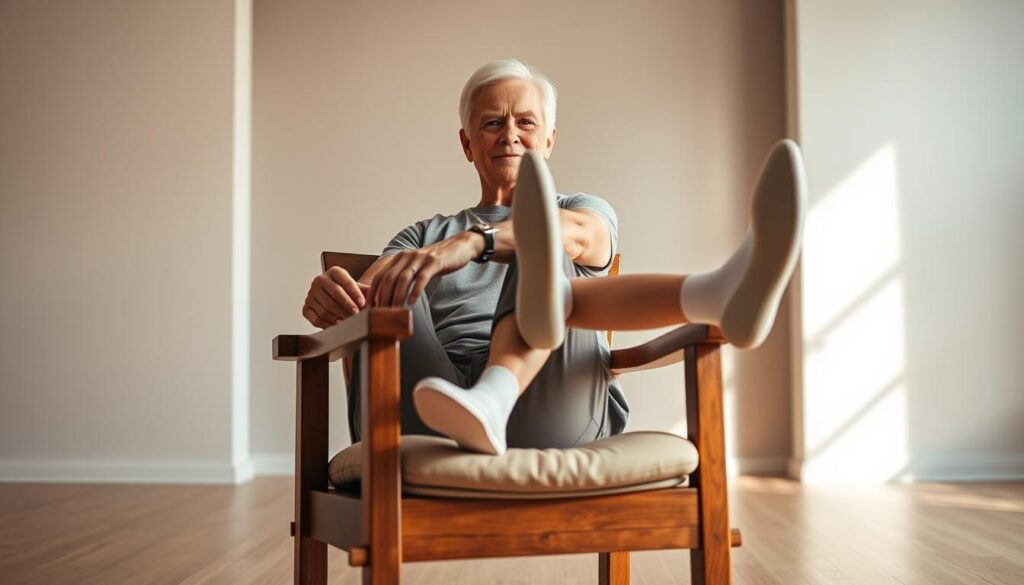
Who says you need fancy equipment to feel unstoppable? Let’s talk real-world tactics that blend into your daily routine. Trust me—your couch isn’t just for naps. It’s a stability training partner waiting to happen.
Chair-Based Moves You Can Trust
Sit tall like you’re balancing a book on your head. Feet flat, knees at 90 degrees. Now, lift one heel while pressing the other foot down—feel that core fire up? Hold 3 seconds. Switch sides. Do this during commercial breaks and you’ll get stronger without leaving your seat.
| Move | Feet Position | Pro Tip |
|---|---|---|
| Seated March | Shoulder-width | Pretend you’re stomping grapes (gently!) |
| Side Leg Lift | Toes pointed forward | Imagine kicking away pesky mosquitos |
| Chair Squat | Heels under knees | Use armrests for backup support |
Floor Exercises That Pack a Punch
Lie on your back, knees bent. Press through your feet to lift your hips—boom, you’re doing a bridge! Squeeze those glutes like you’re holding a $20 bill between them. Lower slowly. Too easy? Try lifting one leg. Your core will send you thank-you notes.
Pro tip: Place a pillow under your hips if the floor feels like concrete. Start with 5 reps. Work up to 10. Consistency beats intensity every time. Before you know it, standing up from the floor’ll feel like rising from a throne.
Remember: These aren’t just moves—they’re your secret weapons against creaky joints. Now go show that chair who’s boss.
Techniques for Safe Execution of Hip Flexor and Glute Workouts
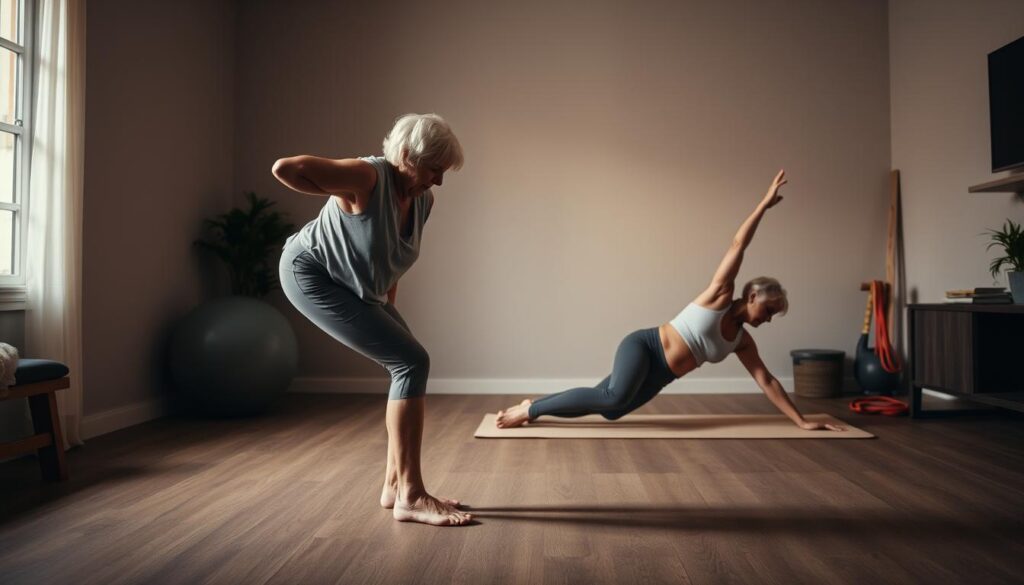
Picture this: You’re halfway through a workout when your lower back starts whispering (or shouting) complaints. Sound familiar? Proper alignment isn’t just yoga talk—it’s your body’s cheat code for activating the right muscles while protecting joints. Research shows that even a 5-degree misalignment reduces muscle engagement by 20% and cranks up injury risk. Let’s fix that.
Your Alignment Checklist
Think of your spine as a stack of coins. Toes pointing forward? Check. Weight evenly split between both feet? Double-check. Here’s my golden rule: If it feels awkward, you’re probably doing it right. Your body loves shortcuts, but alignment is about rewiring those lazy habits.
- Floor work 101: When lying down, press your lower back flat like you’re squishing a grape. Can’t feel it? Slide a hand underneath—if there’s space, tilt your pelvis until your fingers get trapped.
- Support saviors: Use a chair or wall like training wheels. Place one hand lightly on the surface—enough to steady yourself, not enough to lean.
- Return to start: After each rep, reset completely. Shake out tension. This isn’t a race—precision beats speed every time.
| Alignment Check | Why It Matters | Quick Fix |
|---|---|---|
| Toes drifting outward | Shifts weight to inner knees | Pretend you’re standing on railroad tracks |
| Hips tilting forward | Overworks lower back | Engage core like bracing for a sneeze |
| Shoulders rounding | Compresses neck nerves | Imagine a string pulling your head upward |
Stick with it—your health isn’t built in a day. I’ve seen folks transform stiff movements into fluid motions by nailing these basics. And hey, if golfers can boost their swing power through smart alignment, you can conquer those bridges and leg lifts. You’ve got this.
Targeted Routines That Build Core Balance and Stability
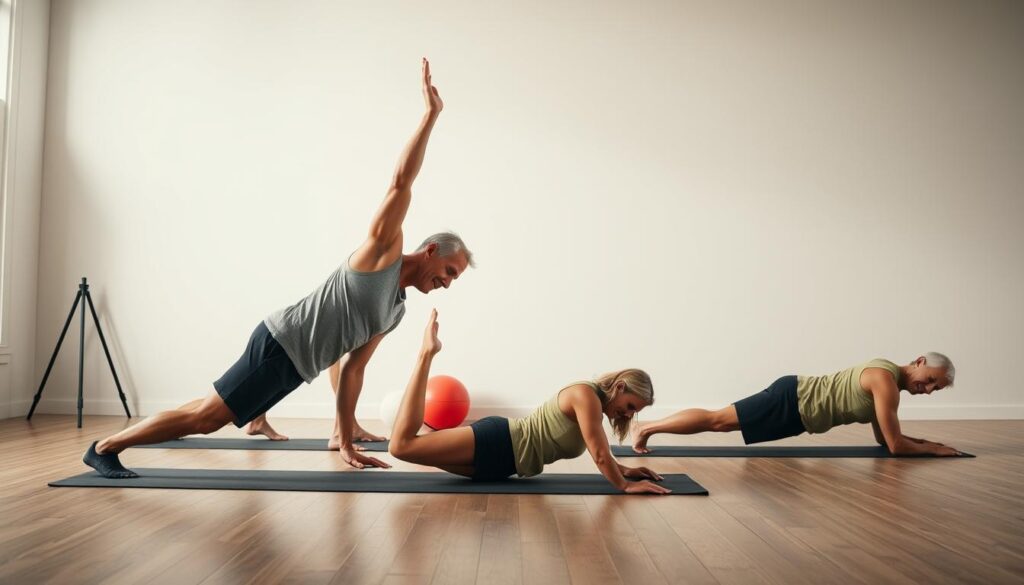
Let’s talk about turning your living room into a balance-boosting powerhouse. Resistance bands and body-weight moves are like peanut butter and jelly—they just work better together. Studies show this combo improves stability 40% faster than solo exercises. Trust me on this: you’ll feel the difference when reaching for that top shelf or navigating uneven sidewalks.
Band Tricks Your Body Will Love
Start seated with knees bent—feet flat, band looped above your knees. Press outward like you’re fighting a grumpy cat trying to sit on your lap. Hold 5 seconds. Release. Repeat 10x. Not too shabby for a move you can do while waiting for coffee to brew.
- Standing March Plus: Step on the band, hold ends at hip height. Lift knees high while pulling upward—imagine marching through sticky caramel
- Wall Squat Hack: Place band above knees, back against wall. Slide down until thighs parallel. The band fights inward collapse, protecting your lower back
- Floor Bridge Boost: Loop band around thighs. Lift hips while pushing knees outward. Hello, sleepy glutes!
| Move | Without Band | With Band |
|---|---|---|
| Leg Lifts | Works surface muscles | Activates deep stabilizers |
| Squats | Focuses on quads | Engages hip muscles evenly |
| Side Steps | Basic balance practice | Builds rotational control |
Pro tip: Always return to starting position between reps. Reset your feet shoulder-width, knees slightly bent. This isn’t just about form—it’s your body’s “home base” for maximum muscle memory. Chronic lower back sufferers report 68% less stiffness after 4 weeks of these targeted routines.
Remember that friend who claims yoga cured their golf slice? Same principle here. Small tweaks create big wins. Now go be the balance ninja I know you are.
Pushing Limits with Progressive Lower Body Movements
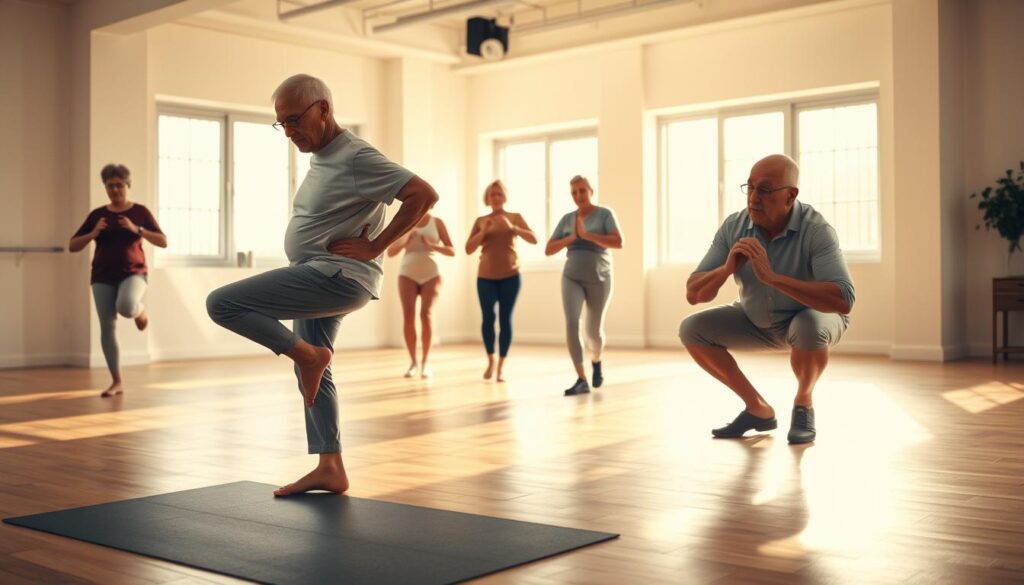
Progress isn’t about lifting heavier—it’s about working smarter. I’ve watched clients transform stiff shuffles into confident strides by mastering one golden rule: add reps before adding resistance. Physical therapists swear by this approach—it’s like building a skyscraper’s foundation before adding floors.
Here’s the kicker: Your first 5 chair squats matter more than your 15th. Why? If your feet flat position crumbles by rep 8, you’re training bad habits. Start with rock-solid basics—hips aligned, knees tracking over toes. You’ll know what I mean when your hip joint stops barking during afternoon walks.
When to Turn Up the Heat
- Rule #1: Nail 10 perfect reps before adding more. Form trumps numbers every time
- Real-world test: Can you chat while doing leg lifts? If not, you’re pushing too hard
- Secret sauce: Add 1-2 reps every 3 days. It’s all about the grind without the groan
| Progression Step | Form Check | When to Advance |
|---|---|---|
| Chair marches | Feet stay planted | When you feel zero lower back strain |
| Standing leg lifts | Hip doesn’t hike up | After 12 controlled reps |
| Bridge holds | No ribcage flaring | When 20-second holds feel easy |
Notice those hip flexors burning during side steps? Good. That means you’re engaging the right muscles. But always return to starting position between reps—it’s your reset button for proper alignment.
Here’s my challenge: Next time you do seated leg lifts, add one extra rep. Then two. Your body adapts faster than you think. Just remember—if your form starts looking like a melted candle, dial it back. The goal isn’t to break records…
Practical Workouts to Boost Balance and Mobility in Real Life
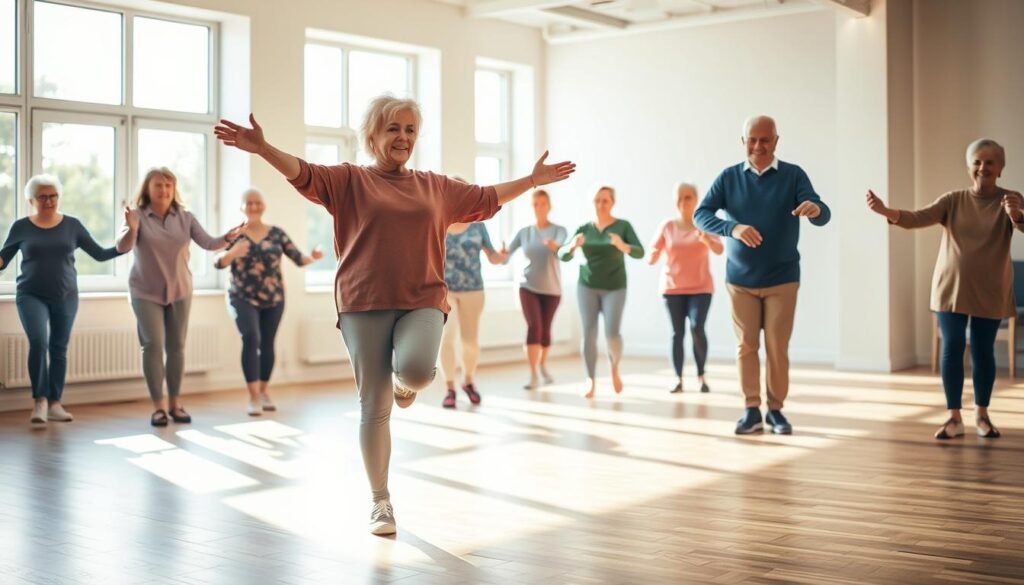
Ever tried standing on one leg while putting on pants? Yeah, that’s not just a balance test—it’s real-life training. Let’s cut to the chase: These moves mimic daily tasks so you’ll feel the difference reaching for cereal boxes or stepping out of your car. No gym required—just your kitchen counter and a dash of grit.
Counter Reach Challenge: Stand facing a counter. Lift one foot slightly like you’re avoiding hot lava. Reach across your body to grab an imaginary spice jar. Switch sides. Do this while waiting for toast—bonus points if you pretend it’s cinnamon.
Here’s the kicker: Foot placement matters more than you think. Turn toes slightly outward when standing—like a penguin wearing sneakers. This simple tweak fires up muscles around your knees, making stairs feel less like Mount Everest.
| Foot Position | Daily Benefit | Pro Tip |
|---|---|---|
| Toes forward | Better shoe tying posture | Imagine balancing books on your knees |
| Heels together | Steadier side steps | Pretend you’re squeezing a beach ball |
| Wide stance | Safer laundry bending | Keep weight in your heels, not toes |
Real talk: Weak legs turn grocery aisles into obstacle courses. Try the Car Exit Drill. Scoot to the edge of a chair. Place feet flat, knees over ankles. Push through your heels to stand—like launching a rocket. Lower slowly. Do this 5x before doctor appointments.
Noticed that ache in your front thigh when gardening? Spread your legs wider than your hips next time. It’s like giving your knees a supportive hug. And hey, if you wobble? No biggie. Grab a counter—progress beats perfection every time.
Wrapping Up Your Regimen with Ongoing Adjustments and Fresh Moves
Let’s get real—your body’s smarter than a GPS. If you ask me, doing the same moves day after day is like watching reruns of your least favorite show. Switch up which sides you start with during leg lifts. Add 5 seconds to your bridge holds. Your joints thrive on these tiny surprises.
Here’s a trick I stole from my gardening buddy: Time exercises to commercial breaks. Do seated marches for 30 seconds during ads. Alternate sides each break. By the time your show returns, you’ve clocked 10 minutes of targeted work without glancing at the clock.
Keep your hands busy too. Place one on your hip during side steps—feeling that muscle fire? Good. Now switch sides. It’s not about perfection—it’s about staying curious. Research shows changing just time under tension can boost results by 22%.
So here’s the thing… That nagging stiffness when you stand? Might vanish if you… Well, try shifting your hands wider during chair squats. Or pause mid-movement for three seconds. Your breakthrough could be one tweak away. Now go—your next joint-friendly adventure awaits.
